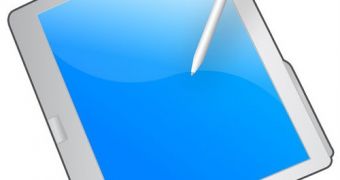The evolution of Windows handwriting recognition engines began for Microsoft approximately 16 years ago, with the Pen extensions for Windows 3.0, and with the advent of Windows 7 the technology will advance even further. Undoubtedly, Windows 7 brings the usage of natural user interfaces to the next level with its default touch and gesture-based infrastructure, but at the same time the operating system is better tailored to Tablet PCs compared to its precursors. A Program Manager on the User Interface Platform team identified only as Yvonne indicated that the list of languages supported by Windows 7's handwriting recognition engine would grow with the addition of Norwegian, Swedish, Finnish, Danish, Russian, and Polish, on top of the 12 languages already supported by Windows Vista (USA, UK, German, French, Spanish, Italian, Dutch, Brazilian Portuguese, and Chinese – Simplified and Traditional, Japanese and Korean).
“Windows has true cursive handwriting recognition, you don’t need to learn to write in a special way – in-fact, we’ve taught (or 'trained,' as we say) Windows the handwriting styles of thousands of people, and Windows learns more about your style as you use it,” the PM stated. “Over the last 16 years we’ve developed powerful engines for recognizing handwriting, we continue to tune these to make them more accurate, faster and to add new capabilities, such as the ability to learn from you in Vista. Supporting a new language is much more than adding new dictionaries – each new language is a major investment. It starts with collecting native handwriting, next we analyze the data and go through iterations of training and tuning, and finally the system gets to you and continues to improve as you use it.”
In order to perfect the Windows handwriting recognition engine, Microsoft has harvested and analyzed millions of samples of written text from writers in various geographical areas around the world. All the collected data is split between a training set and a blind set, used by the development team and by the test team, respectively. Microsoft subsequently educates the Neural Network at the foundation of the Windows handwriting technology. It is the responsibility of the Neural Network to assess stroke segments when it computes the probabilities of the text. But in addition to the network, the technology also makes use of the Language Model, which is intimately connected with the lexicon.
Simultaneously, the Windows 7 handwriting recognition engine will learn through personalization. In this context, the feature will ask the user to provide samples of text and understand the actual writing style. “The more data a person donates during the personalization process, the better the recognizer will become. In addition to providing writing samples based on specified sentences, a person can target specific recognition errors, shapes, and characters that will all be used for training. Our Personalization feature is complex and offers a variety of different modules that enable a person to optimally tune the recognizer. We are proud to announce that Personalization will be available for all Vista languages and all new Windows 7 languages. We encourage you to use this feature to improve your recognition accuracy,” Yvonne added.

 14 DAY TRIAL //
14 DAY TRIAL //